Bulletin E364
Providing good pasture for livestock is among the oldest forms of agriculture. Pasturing is associated with numerous benefits for grazing animals. It is an economical feed source, and it is also good for animal health and welfare. Pasture farming systems also provide social benefits by creating attractive landscapes for the viewing public.
Well-managed pasture farming systems are beneficial for building soil health, controlling erosion, and capturing carbon from the atmosphere. Soils under permanent pasture on average have significantly higher levels of soil organic matter content than cultivated fields. Pastures, consisting of grasses, legumes, and/or forbs, provide the same ecological soil health building services as cover crops. And when grazed by livestock, pastures contribute to the production of milk, meat, and eggs. With an estimated 42,500 horses in New Jersey, pastures are also very important for providing feed and exercise in the equine industry.

Figure 1: Equine grazing. Photo credit Mike Westendorf.
Foods produced by livestock grazing have enhanced nutritional properties compared to the same foods produced by animals held by confinement operations. This pasture feeding influence tends to differentiate organic dairy products from conventional. The United States Department of Agriculture’s National Organic Program (USDA-NOP) standards, for example, require ruminants to be fed pasture forage and limited grain (7 C.F.R. pt. 206). As a result, organic milk produced during the grazing season typically contains higher levels of omega-3 and lower levels of omega-6 fatty acids than conventional milk, which improves its nutritional quality for human health. Because of the pasture requirement, organic milk often has higher levels of conjugated linoleic acid and fat-soluble vitamins that are beneficial to human nutrition. Other dairy farmers could also enhance the nutritional profile of milk production by feeding cows on pasture, but this practice is less common in modern conventional farming.
Although much of the pasture acreage is kept as permanent pasture, several years in pasture can be an important part of a crop rotation plan. As a rotation crop, pasture helps with breaking pest cycles, controlling certain types of weeds, and especially with building soil organic matter content. Organic matter is a storehouse for nutrients, especially nitrogen (N), phosphorus (P), and sulfur (S), locked up in organic compounds. These stored nutrients slowly become available to rotation crops with the help of microbial activity. Often the pasture in a rotation will boost the productivity of annual crops that follow from the associated soil quality improvements and release of stored fertility. During years of annual row crop production, soil organic matter and fertility levels can be depleted. Returning the land to perennial sod crops or pasture is the part of the rotation where soil organic matter and fertility levels can be rebuilt. Perennial pasture plantings, when properly managed, can also contribute to soil quality by improving the physical condition (structure) of soil, which allows greater water infiltration, less runoff and erosion, better aeration, and deeper rooting.
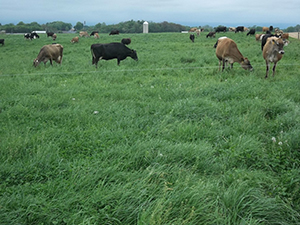
Figure 2: Rotational grazing with dairy cows. Photo credit Joseph Heckman.
While pasture-based farming systems are associated with many environmental, animal welfare, and human health benefits, these positive attributes must be built upon a foundation of good soil fertility and pasture management. The soil fertility needs of pastures often do not receive the same level of attention for liming and nutrient inputs as do annual cultivated row crops. When soil fertility needs of pastures are fully satisfied, the numerous benefits listed above are magnified.
One of the reasons for soil fertility neglect is that pastures are harvested by animals and not by machine, as with corn, for example, where grain yields are easily measured. Another reason may be that plant nutrient deficiencies on perennial pasture species are not as visually apparent as may be the case with annual row crop species.
Sometimes soil fertility is neglected because pastures are located on the most marginal lands of a farm. Such pastures can be greatly improved with appropriate attention to soil testing, liming, and fertilization.
Soil Sampling for Pastures
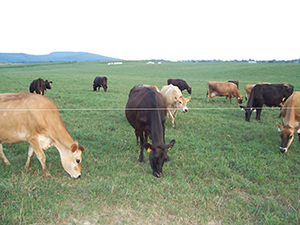
Figure 3: Rotational grazing with dairy cows. Photo credit Joseph Heckman.
Rutgers University Soil Testing Lab has a video demonstration on how to collect soil samples.
The fact that plants are rooted in place and animals move about changes nutrient distribution. As animals move, they mobilize plant nutrients and redistribute soil fertility, sometimes concentrating it in localized zones. While soil sampling procedures for pastures are much the same as for other croplands, it is important to be mindful of how livestock behavior can influence nutrient distribution. Animals tend to congregate around water stations, shade trees, mineral licks, supplemental feed stations, along fence lines, or on elevated landscapes and leave behind an abundance of manure. Therefore, to collect meaningful and representative soil samples, these manure-enriched areas should be avoided, or be designated as separate soil sampling areas, when pulling soil sample cores. When pulling samples, also avoid taking cores adjacent to manure patties and urine-soaked earth.
In rotational grazing systems, larger fields are typically split into numerous smaller paddocks. If individual paddocks are different because of past management, performance, or different forage species composition, they should be managed as separate soil sampling areas.
From a specified area, collect in a clean plastic bucket about 20 soil probe cores from the 0 to 6-inch layer of surface soil. This collection of soil cores should be thoroughly broken up and mixed by hand to homogenize the sample. About a pint composite of this soil represents one sample that should be appropriately labeled for the designated land area.
Calcium (Ca), Magnesium (Mg), and Liming
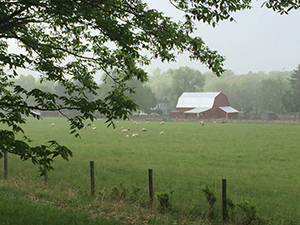
Figure 4: Pastural landscape with grazing sheep. Photo credit Lucia Stout.
Soil fertility, especially use of limestone, tends to be neglected on pastures more so than on regular cropland. Correcting soil acidity and supplying a good balance of Ca and Mg fertility is important to ensuring pasture productivity, keeping legumes in the species mix, and animal health and performance. The target soil pH for pasture soils should be pH 6.5 or even as high as 6.8 to 7.0 when alfalfa is in the pasture mix. Proper pH management is important because it influences availability of many soil nutrients to plants.
Selecting the appropriate liming material to ensure balanced Ca and Mg nutrition is critically important to animal health. In particular, lush spring growth of grasses that are deficient in Mg may increase the risk of grass tetany, a deadly disease in grazing ruminants. If the soil test report shows that the Mg level is less than optimum, the type of limestone applied should be dolomite, with an elemental Mg concentration on the product label near 10%. For pasture, the target Mg saturation of cation exchange capacity as measured by soil test should be in the range of 12 to 20%. The target for Ca saturation should be in the range of 65 to 70%. Legumes are better accumulators of Mg, and for this reason, including legume species in a pasture species mix helps to reduce the risk of grass tetany.
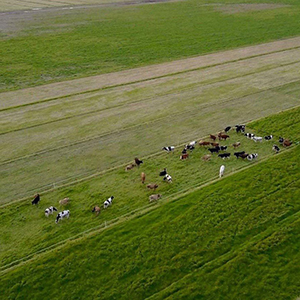
Figure 5: Paddocks illustrating rotational grazing of dairy cattle at Organic Pastures Dairy. Photo Credit Mark McAfee.
Application rates for limestone are expressed as pounds/acre of calcium carbonate equivalent, abbreviated as CCE. The Rutgers Soil Testing Lab calculates the recommended application rate based on measures of soil pH and another factor called the “Lime Requirement Index.” This part of a soil test accounts for the buffering capacity of the soil, which is influenced by soil texture and organic matter content. For example, starting at pH 5.5, a silt loam soil would need about 3 times as much limestone as a loamy sand soil to reach a target soil pH of 6.5.
Occasionally soil testing will identify pastures that have a satisfactory soil pH level but soil test levels for Mg or Ca are deficient. Rather than apply limestone, Mg deficient pastures may be fertilized with magnesium fertilizer or in the case of Ca deficient pastures by applying gypsum (calcium sulfate).
Phosphorus (P) and Potassium (K)
New seedings have a greater need for P, especially for root growth, than already established pasture plants. Because plants do not take up as much P as N or K and because it binds strongly to soil particles, P tends to accumulate. On established pastures with good levels of fertility, P does not need to be reapplied frequently. Fertilizer P is often added as a starter for new seedings to assure P is available to seedlings with a limited root system.
Grasses are competitive for K uptake and can tolerate lower levels of K fertility. Fertilization with K is more important for maintaining the legumes in a mixed pasture with grasses.
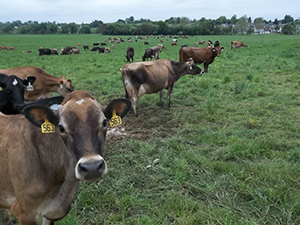
Figure 6: Organic dairy cows on pasture. Photo credit Joseph Heckman.
The need for a P or K fertilizer application should be based on the fertility levels as determined by soil test (Tables 1 and 2). Soil fertility levels are classified as either below optimum, optimum, or above optimum. On soils with P or K fertility levels above optimum, there should be no application of P or K fertilizer. Possible exceptions are for new seedings of grasses or legumes into an existing pasture or for renovations to establish a new pasture where an application rate 20 pounds/acre of P fertilizer can be justified to encourage more rapid seedling establishment.
Where soil fertility levels test is in the optimum range for P or K, moderate application rates as outlined in Tables 1 and 2 are recommended.
Where soil fertility levels test in the below optimum range for P or K, higher application rates are recommended. The recommended rates are designed to build up the P or K fertility levels into the optimum range.
Although hay and pasture plants are often the same crop species, the soil fertility management of pasture is quite different than for hay. This is because when forage is harvested by machine for hay, the total above ground biomass removes substantial amounts of P, K, and other mineral nutrients. Repeated harvest of hay can deplete soil fertility rapidly. In contrast, grazing with livestock does not cause rapid depletion since approximately 80% of the minerals pass through the animal back onto the pasture.
One caution with respect to K fertilizer application to pastures is to be mindful of “luxury” K uptake – an amount more than needed for normal plant nutrition. Excessive K uptake by plants competes with Mg uptake, potentially causing a Mg deficiency. Lower concentrations of Mg in grasses increases the risk of grass tetany. When more than 50 pounds of K fertilizer are recommended, the K fertilizer should be split into several separate applications spaced out over the growing season.
| Soil Test Category | Mehlich-3 Soil Test P1 (pounds P/acre) |
New Seedings2 |
Permanent Pasture |
Intensive Rotational Grazing |
|---|---|---|---|---|
| Phosphorus Recommendation (pounds P205/acre) | ||||
| Below Optimum | 25 50 |
100 80 |
60 50 |
80 70 |
| Optimum Range | 75 100 125 |
60 40 20 |
40 30 20 |
60 50 25 |
| Above Optimum Range | >125 | 20 | 0 | 0 |
| Soil Test Category | Mehlich-3 Soil Test K1 (pounds K/acre) |
New Seedings |
Permanent Grass Pasture |
Intensive Rotational Grazing |
|---|---|---|---|---|
| Potassium Recommendation (pounds K20/acre) | ||||
| Below Optimum | 50 75 100 125 |
160 140 120 100 |
160 120 80 40 |
160 140 120 100 |
| Optimum Range | 150 225 300 |
80 60 40 |
20 0 0 |
50 25 0 |
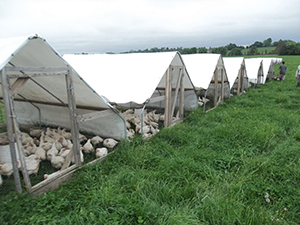
Figure 7: Poultry raised on pasture in movable pens. Photo credit Joseph Heckman.
Nitrogen (N)
Many factors influence N requirements and timing of fertilizer application to pastures.
Applying N fertilizer favors the growth of grasses and other non-legume species. Pastures with a species mix of 25% or more legumes are self-sufficient in N due to biological N fixation and generally should not be fertilized with N. Applying N fertilizer to a mixed pasture will shift the species composition away from legumes and towards more grass. Before seeding legumes into a pasture, inoculation of the legume seed with the appropriate strain of Rhizobium bacteria is recommended to ensure biological N fixation.
Where grasses and nonlegumes are intended to be the dominant species in the pasture mix, it is appropriate to apply N fertilizer. Fertilizer N for grass pastures should be split into several separate applications designed to increase forage supply for anticipated need in the weeks ahead. Appropriately timed applications of 40 pounds N/acre may be broadcast immediately after each grazing cycle for a season total application of about 80 to 120 pounds N/acre. Soils with high organic matter content (greater than 3%) may need less N fertilizer, and soils with low organic matter (less than 2%) may need more N fertilizer.
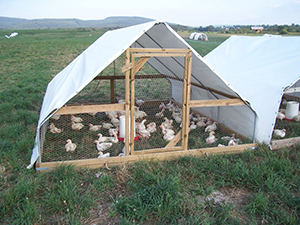
Figure 8: Poultry raised on pasture in movable pens. Photo credit Joseph Heckman.
In general, apply a very low or a zero rate of N fertilizer before spring pasture growth since this tends to result in a temporary excess in forage supply that quickly goes to seed. Livestock do not like to graze mature plants with seed heads. Fertilize with N instead with the intention to promote summer and fall forage production. This schedule helps to even out forage supply for season- long grazing. Also consider the influence of moisture and temperature. In the case of drought, fertilizer will not efficiently increase pasture growth since water is the limiting factor. Fertilization is not recommended after October and in the winter months when grasses are not actively growing.
Nitrogen fertilizer sources containing urea, including urea-ammonium nitrate (UAN), tend to release or waste considerable amounts of N into the atmosphere unless rainfall or irrigation water moves the fertilizer N into the soil shortly after application. Thus, when using urea-containing fertilizers as the N source, try to time applications shortly before rain is forecast. Ammonium sulfate and nitrate sources of N are not vulnerable to this loss pathway.
Applying N as ammonium sulfate is strongly acidifying to the soil. This will increase the need for more frequent limestone applications. But an advantage of ammonium sulfate is that it is an excellent source of sulfur. Ammonium nutrition of plants also tends to enhance availability of P and Mn from soil.
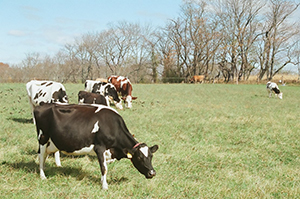
Figure 9: Organic dairy cows on pasture. Photo credit Mark Keating.
Animal manures are a good N source for pastures. But ideally, manures should be composted or well-aged before spreading over pastures. Besides N, manures also supply useful amounts of P, K, S, and micronutrients.
Fertilizers should not be broadcast at the same time animals are on the pasture. Do not apply fertilizer until after animals have finished grazing a paddock and they have moved over to a new pasture, and do not allow animals to return to a fertilized pasture until enough rain (greater than 0.25 inches) has fallen to wash fertilizer off from plants and into the soil.
Sulfur (S)
The need for S is generally not determined by soil test. Forage tissue analysis can be used for S deficiency diagnosis. When the N:S ratio is greater than 10:1, it is an indication of S deficiency.
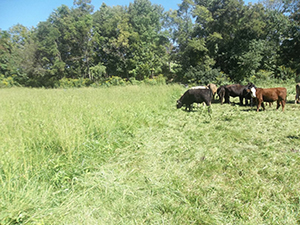
Figure 10: Rotational grazing with beef cattle on pasture.
Sandy soils and other soils low in organic matter content are more likely to be S deficient. The potential for S deficiency is becoming more common since clean air/antipollution efforts have resulted in decreased amounts of S deposited from the atmosphere. For legumes, a higher level of S nutrition is needed for protein synthesis and formation of N-fixing root nodules. On soils where S is needed, recommended annual S application rates range from 20 to 30 pounds S/acre. Certain types of P and K fertilizers, such as superphosphate or potassium sulfate, when applied for purposes of P or K fertilization, will also supply significant amounts of S. Where N fertilizers are being used, choosing to apply N as ammonium sulfate will also supply substantial amounts of S.
In fact, many fertilizers that might be applied to pasture (magnesium sulfate, 14% S; potassium sulfate, 18% S; potassium magnesium sulfate, 23% S; calcium sulfate; 24% S, or gypsum, 19% S) will supply S as plant available sulfate. Consider the soil test K, Mg, and Ca fertility levels to select the most appropriate S fertilizer source.
Compost and animal manures are also very good sources of sulfur, and when spread over pastures, should satisfy the need for this nutrient.
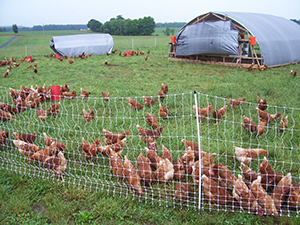
Figure 11: Chickens on pasture. Photo credit Joseph Heckman.
Manganese (Mn)
Soil testing and plant tissue analysis are useful for identifying a deficiency. Plant tissue samples with less than 25 ppm are Mn deficient.
Manganese deficiencies are common on sandy soils of southern New Jersey but are seldom found deficient in finer textured soils of northern New Jersey. Alfalfa grown on sandy soils is particularly susceptible to Mn deficiency because of the high soil pH level recommended for this crop. As soil pH increases, plant availability of soil Mn decreases. Alfalfa and other pasture species must be grown at the proper soil pH level for the plants to be productive.
Legumes with mild symptoms of Mn deficiency lack dark green color. Every plant species is susceptible to Mn deficiency on high pH soils severely deficient in available Mn. When the deficiency is severe, leaves have green veins with yellowing between the veins (described as vein banding).
On soils where Mn deficiency is a problem, it typically reoccurs in the same field sites every year. It is difficult and expensive to permanently correct this nutrient deficiency. Regular application of soluble Mn fertilizer as a spray on the plant foliage is the generally recommended approach.
On grass pastures where N fertilizers are applied regularly, using ammonium sulfate as the N source can help to alleviate or prevent Mn deficiency.
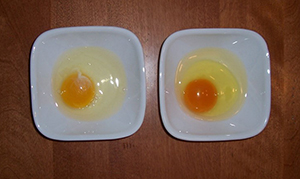
Figure 12: Eggs from chickens grazing pasture produce eggs with a darker colored yolk (Egg on left from chicken in confinement versus egg from chicken on pasture). Photo credit Joseph Heckman.
On pastures with a history of Mn deficiency, be prepared to apply Mn fertilizer as a foliar spray after each pasture rotation when the plants are about 3 to 4 inches tall. Apply the Mn at the rate of 0.5 pounds of Mn/acre for each foliar treatment. Solutions of manganese sulfate or chelated forms of Mn are equally effective as foliar fertilizers.
Fertilizer Mn may also be applied to the soil as a broadcast treatment. For new seedings, broadcast 20 pounds Mn/acre to prevent deficiency during establishment. However, there is little residual benefit in subsequent growing seasons to soil applied Mn fertilizer. Chelated forms of Mn are not recommended for soil application. For established pastures, foliar applications of Mn fertilizer are generally more effective and economical.
Avoiding excessive application of limestone and the raising of the soil pH level beyond what is optimum for the crop is also important. On grass pastures where N fertilizers are applied regularly, using ammonium sulfate as the N source can help to alleviate or prevent Mn deficiency due to its acidifying reaction in soil.
Rutgers Cooperative Extension fact sheets FS973, Manganese: Needs of Soils and Crops in New Jersey and FS632, Correction of Manganese Deficiency in Alfalfa provide additional information about Mn nutrition and correction of Mn deficiency.
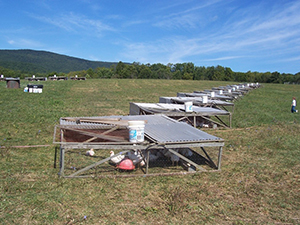
Figure 13: Chickens raised on pasture at Polyface Farm. Photo credit Joseph Heckman.
Boron (B)
Sandy coastal plain soils are the most susceptible to B deficiency. Soils with less than 1 ppm B (by hot water extract or by the Mehlich-3 soil test method) are considered boron deficient for alfalfa and other forage legumes. When legumes are a part of the pasture species mix, it increases the need for B fertilization. Alfalfa has an especially high demand for B. Other forage legumes also have higher B requirements than forage grasses.
On pastures intended to include legume forages, broadcast B at 1 to 2 pounds/acre prior to seeding and 1 pound B/acre annually after establishment, if needed. Recommendations for B fertilization may be adjusted based on soil testing. Solubor (sodium borate, 21% B) is a water-soluble fertilizer that can be evenly sprayed over a pasture field. Another way to apply B is as a blend with mixed fertilizers.
Because excessive B can cause toxicity to crops, be careful not to exceed the recommended rates. Rutgers Cooperative Extension fact sheet FS873, Boron: Needs of Soils and Crops in New Jersey provides additional information on B.
Molybdenum (Mo)
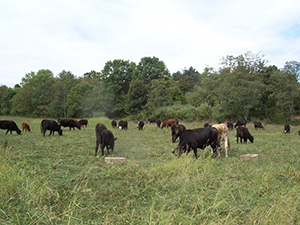
Figure 14: Beef cattle grazing at Polyface Farm. Photo credit Joseph Heckman.
The bacteria that enable legumes to carryout biological nitrogen fixation require Mo. New Jersey soils generally contain enough Mo, but its availability is strongly influenced by soil pH. Liming acid soils to the proper soil pH (6.5 to 6.8) for legumes will greatly improve Mo availability. It may be applied along with the seed inoculation treatment at the rate of 1 ounce of Mo/10 pounds of seed, but the Mo is generally not necessary for crops grown on well-limed soils. Additional information on Mo is provided in Rutgers Cooperative Extension fact sheet FS972 Molybdenum: Needs of Soils and Crops in New Jersey.
Although not common, Mo toxicity in livestock can occur when pastures that are low in available copper (Cu) receive excessive applications of Mo. Toxicity may occur when the Cu:Mo ratio is below 2:1 in forage plants.
Iron (Fe), Zinc (Zn), Copper (Cu), Chlorine (Cl), Nickel (Ni), Sodium (Na), Cobalt (Co), Chromium (Cr), Iodine (I), Silicon (Si), and Selenium (Se)
Deficiencies of some micronutrients may occasionally occur on forage crops grown on New Jersey soils. More often they are provided as mineral supplements directly to grazing livestock. Refer to Rutgers Cooperative Extension fact sheets FS971, FS721, FS720, and FS974 for additional information about some of the micronutrients required by plants.
Fertilizer Applications
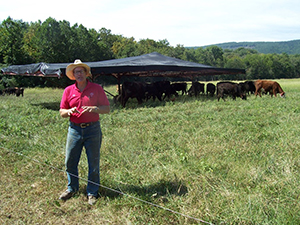
Figure 15: Movable shade shelter for beef cattle grazing at Polyface Farm. Photo credit Joseph Heckman.
Some types of N fertilizers, especially those containing urea, are susceptible to loss of significant amounts of N via ammonia volatilization to the atmosphere. To minimize volatilization from urea fertilizers, time the N application just prior to when rain is forecast or if possible, apply irrigation just after application.
Fertilizers of any type should not be applied to pastures while animals are present. Animals should not be allowed back on a pasture until after a rain shower (greater than 0.25 inches) has washed fertilizer residue off from plant foliage.
Nutrient Management
In the winter months it is common practice to import hay and feed it to animals on pastureland. The imported feed brings along substantial amounts of P and K and other nutrients. Wherever stored feeds are provided, the soils can become enriched or even oversupplied with plant nutrients. Strategically placing or feeding hay in different areas of the pasture is a recommended practice, and especially if placed in zones needing soil fertility build-up. On horse pastures, it is commonly recommended to run a spike tooth or drag chain harrow over these areas to improve manure distribution and speed decomposition.
The objective of a well-designed management intensive rotational grazing system is to keep animals moving onto fresh paddocks and away from their manure deposits. Daily and sometimes twice daily moves to new pasture paddocks improves animal health and performance and evens the distribution of nutrients.
Manure tends to accumulate where animals “campout,” such as under shade trees and near water fountains and mineral licks. Moving pasture shade shelters and mineral licks around whenever possible encourages better manure distribution. Occasional mowing of rejected pasture areas can stimulate fresh growth and also improve distribution.
Pastured poultry—that is the keeping of laying hens or raising broilers on pasture—is promoted by the American Pastured Poultry Producers Association and is becoming an increasingly popular food system. Although ruminants (cattle, sheep, and goats) can obtain 100% of their feed from pasture, chickens obtain only about 10% of their feed by grazing. Some reasons given for raising poultry on pasture is that in a multi-species grazing system they help to scatter cow manure and help to control flies. Since most of the chicken feed is imported onto the pasture, and 80% or more of the nutrients from the feed pass through the bird, the deposited chicken manure represents a significant fertilizing effect. This nutrient input from poultry feed imports must be factored into a nutrient management plan with offsets to use of commercial fertilizer. Each ton of commercially purchased chicken feed is estimated to approximately add 40 pounds of N, 25 pounds of P2O5, and 20 pounds of K2O to the pasture.
On some pastures, nutrient imports from stored feeds may exceed nutrient exports as animal products. When soil fertility levels, as measured by soil testing, climb into the above-optimum range, occasional harvest of pasture plants as hay can be a useful strategy to “draw-down” the excess and regain nutrient balance. An overabundance of forage in the spring may offer an opportunity to harvest some pasture as a first cutting of hay.
On average, a ton of hay fed or harvested contains about 50 pounds of N, 15 pounds P2O5, and 50 pounds of K2O.
Adapting Soil Fertility Recommendations to Organic Farming
Organic livestock in general, and especially farming systems involving ruminants, must be raised on pasture. For example, the USDA National Organic Program (NOP) standard requires that ruminant livestock obtain 30% or more of their dry matter intake from grazing for a minimum period of 120 days per year. Because synthetic N fertilizers are prohibited materials in the organic system, organic farmers should focus on maintaining a forage pasture mix with more than 25% legumes. A significant presence of legumes in a pasture will ensure a good supply of N to the grasses in the pasture mix.
Organic farmers may also spread compost or manures over pastures to build and maintain soil fertility. These natural fertilizers will also supply, besides N, useful amounts of all essential nutrients. If more P is needed than can be supplied by compost or manures, organic farmers can apply rock phosphate. Certain types of K fertilizers are approved for use in organic farming. If potassium is needed there are several commercial K fertilizers, such as langbeinite or potassium sulfate, which may sometimes be used with certain restrictions in organic farming.
Since naturally occurring limestones are approved for use in organic farming, the practice of liming and soil pH management is much the same as in conventional farming. Industrial processed liming materials, such as burnt lime and hydrated lime, are not approved for use in organic farming.
When micronutrient deficiencies occur, they can be corrected as necessary for organic crop production using many of the same fertilizer materials and application practices as used in conventional agriculture. In organic farming, however, micronutrient fertilizer products cannot be routinely applied without prior soil or plant diagnostics to confirm a specific nutrient deficiency.
Always check with the organic certifier to be sure a certain product or material is approved for use in organic farming. Also, be prepared to provide documentation and farm records about any applied materials to one’s organic certification program.
References
August 2020
Copyright © 2024 Rutgers, The State University of New Jersey. All rights reserved.
For more information: njaes.rutgers.edu.
Cooperating Agencies: Rutgers, The State University of New Jersey, U.S. Department of Agriculture, and Boards of County Commissioners. Rutgers Cooperative Extension, a unit of the Rutgers New Jersey Agricultural Experiment Station, is an equal opportunity program provider and employer.

